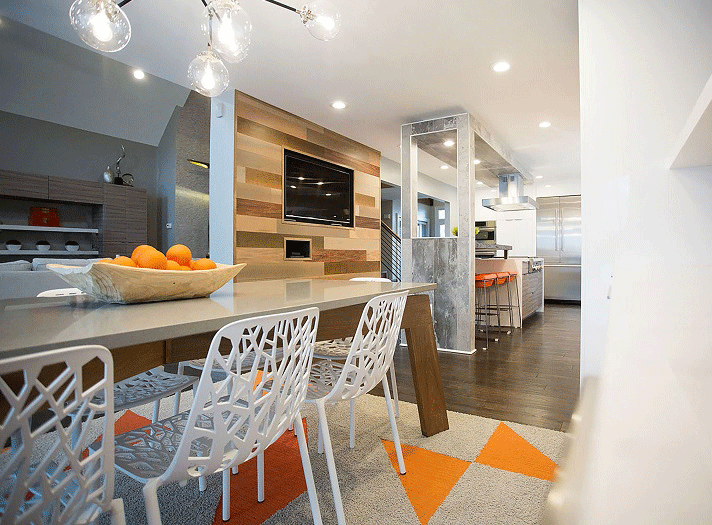Personality is the ingredient that adds life to a space. Professional designers work extensively with clients to help them uncover their personal style and create a home that reflects their unique design sensibility. Rachel Nelson, principal of RL Concetti, recently led a lively but informative Launch! event at MDC titled “How to Inject Personality Into Your Space.” See Rachel’s tips, along with those from other professional designers.
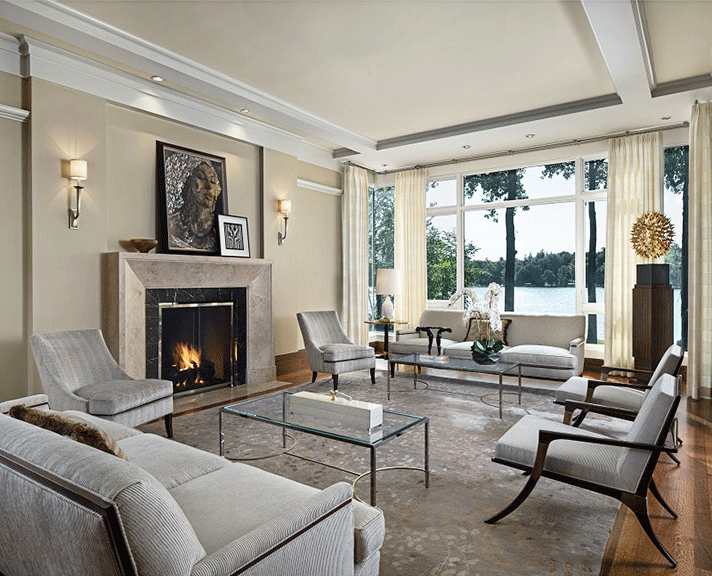
Artwork form his clients’ travels helped Paul Feiten inject a dose of vitality into this space. Photo by Beth Singer
Paul Feiten, owner of Paul Feiten Design in Bloomfield Hills, likes to meet with the client before considering injecting personality into a room. “You have to ask them about personal artifacts and photos they love. If they’re outgoing, with larger-than-life personalities, you have a wide range,” he says. But in the case of the owners of this home on a lake in Oakland County, Paul says they’re “refined, quiet people.” His challenge was to invest the space with personality while respecting his clients’ reserved character. Although the palette is subdued and the mood tranquil, Paul used art to lend vitality to the room, with furniture selected from Baker.
The portrait of the woman over the mantel belonged to the clients. The smaller piece in micro-stone relief, which Paul layered against the larger art, came from their travels, as did the olivewood bowl bought in the Middle East. Paul added the sunburst sculpture on a pedestal for added variety.
If a client desires personality in a space but can’t quite articulate what they want, Paul pumps up the volume. “That’s when you get bolder with color, patterns, and layering” he suggests. “You just have to be careful not to overdo it.”
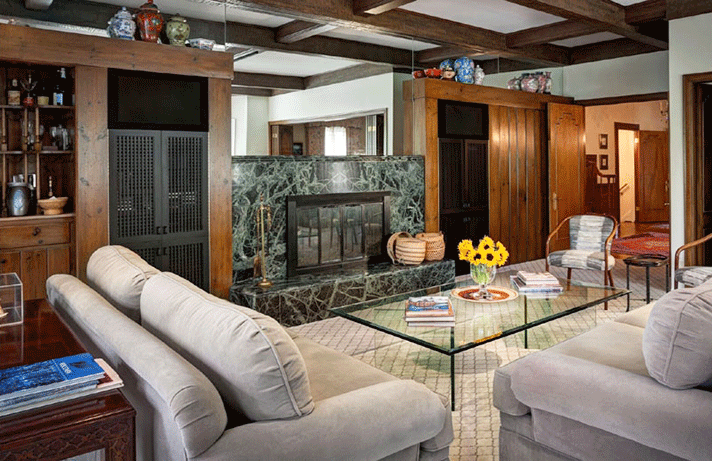
Antique baskets and ceramic jars of the clients are accents in this room by Jane Synnestvedt. Photo by George Dzharistos
Talking extensively with clients about their likes and dislikes is vital in the consultation process, says Jane Synnestvedt, principal of Birmingham-based Jane Synnestvedt Interior Design. It also aids in projecting personality in a room. “Our philosophy is that we are creating a design partnership with our clients. Our inspiration develops through conversations with them and prioritizing how they require the space to be used,” she explains.
Attentive listening helps Jane and her team in their decisions. “We factor in how the client would like to convey their personality – through color, pattern, texture, and personal collections, such as antiques, ceramics, and art,” she says. “We like to incorporate variations of their favorite colors, as well.” Just as important as the clients’ likes are their dislikes, which Jane weighs in her design decisions.
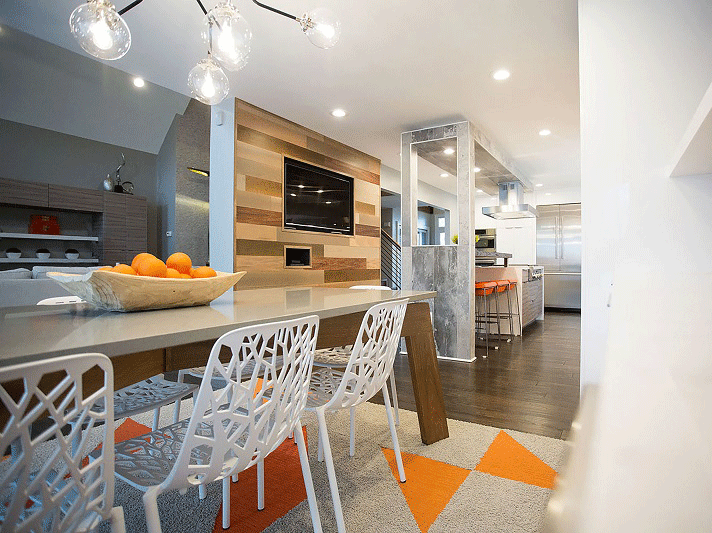
This family spends a lot of time in the kitchen, so Rachel Nelson enlivened the space with orange. Photo by Kendra Koman
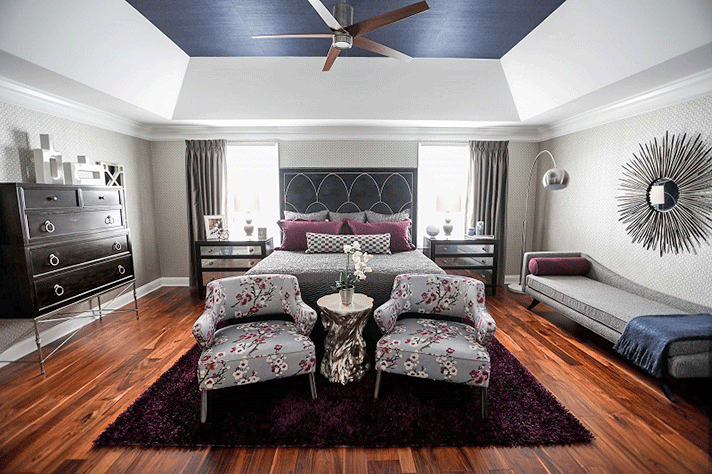
This master bedroom underscores RL Concetti’s clients' sophisticated but fun personalities. Photo by Chelsea Diffenderfer
Designer Rachel Nelson, principal of Detroit- and Birmingham-based RL Concetti, maintains that “The client is everything when talking about personality. We view our role in designing a space as the advocates for our clients. We're here to listen to their wants and needs, and most importantly learn about them as an individual. This is crucial because our goal is to have every space be a reflection of who they are as a person. Each space is an opportunity for expression, not for us, but for our clients.”
Learning about clients and their needs sometimes yields surprises, Rachel says. “We have often found that throughout the process we unveil or define characteristics about our clients that they never even knew they had! We encourage them to make bold decisions.”
In addition to the clients’ personality, Rachel says that the space itself often has a personality. “Each space is as unique as the person living in it,” she says.
“People often try to disguise existing architectural features that might be considered imperfections – quirky lines, unique fixtures, for example. But we like to explore what would happen if we chose to highlight those ‘imperfections’ to make them the stars of the show. Taking existing features of the space and giving them purpose is an incredible way to infuse personality that is unique to the space.”
